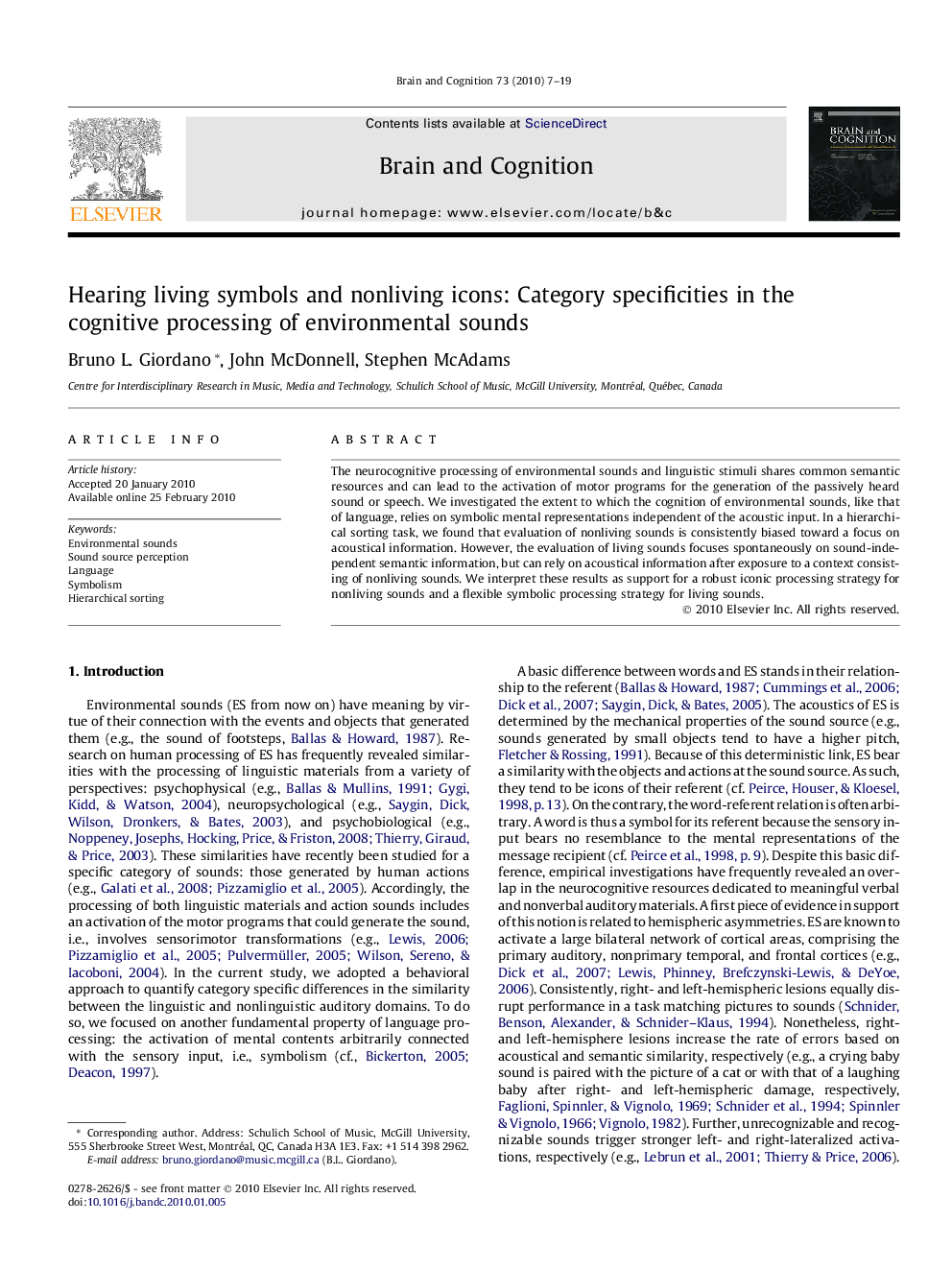| Article ID | Journal | Published Year | Pages | File Type |
|---|---|---|---|---|
| 924751 | Brain and Cognition | 2010 | 13 Pages |
The neurocognitive processing of environmental sounds and linguistic stimuli shares common semantic resources and can lead to the activation of motor programs for the generation of the passively heard sound or speech. We investigated the extent to which the cognition of environmental sounds, like that of language, relies on symbolic mental representations independent of the acoustic input. In a hierarchical sorting task, we found that evaluation of nonliving sounds is consistently biased toward a focus on acoustical information. However, the evaluation of living sounds focuses spontaneously on sound-independent semantic information, but can rely on acoustical information after exposure to a context consisting of nonliving sounds. We interpret these results as support for a robust iconic processing strategy for nonliving sounds and a flexible symbolic processing strategy for living sounds.
